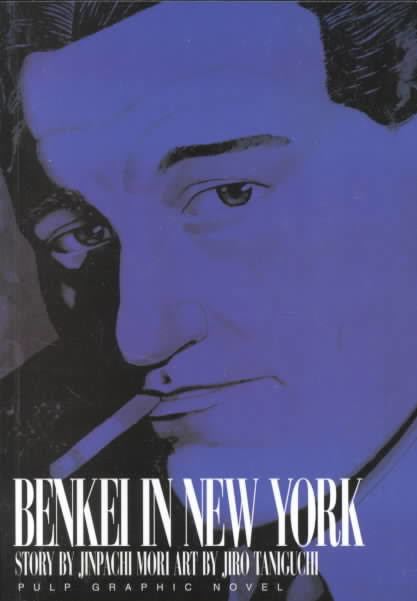6.8 /10 1 Votes6.8
3.4/5 Goodreads Magazine Big Comic Original | 6.9/10 MyAnimeList Written by Jinpachi Mori Originally published 1996 | |||||||||||||||||||||||||||||||||
 | ||||||||||||||||||||||||||||||||||
Genres Action fiction, Crime Fiction Similar Jiro Taniguchi books, Other books | ||||||||||||||||||||||||||||||||||
Benkei in New York (Japanese: N.Y.の弁慶, Hepburn: N.Y. no Benkei) is a one-volume manga written by Jinpachi Mori and illustrated by Jiro Taniguchi. It is a collection of short stories revolving around a Japanese artist who moves to New York, but secretly works as a hitman in his spare time. It was originally serialized in the Japanese manga magazine Big Comic Original by Shogakukan between 1991 and 1996. The manga was serialized in North America by Viz Media in its Pulp magazine in 2000 and later collected in graphic novel format. Critics have praised the series for its uniqueness compared to North American crime fiction as well as its execution of horror.
Contents
Plot
Release
The manga was originally serialized in the magazine Big Comic Original by Shogakukan between 1991 and 1996. It was collected into one tankōbon volume and released in 1996 by Shogakukan.
The manga has been published in English by Viz Media through its manga magazine Pulp. Its first chapter appeared in the June 2000 issue of the magazine, and the complete series was published in graphic novel format in May 2001.
Reception
As the time of its release by Viz Media, Warren Ellis declared that "Benkei is better than 96% of the crime fiction coming out of America right now." Although he described the stories as "ghoulish", Jason Thompson commented that Taniguchi can depict "the blood and the death in a cool, calm fashion." He also highlighted a battle sequence in the third chapter as "particularly notable" as it is wordless and free of sound-effects. Katherine Dacey of Manga Bookshelf said: "If Benkei's motives and methods are sometimes inscrutable—or downright illogical—the stories still work beautifully, with crack pacing and memorable denouements that can be as deeply unsettling as they are emotionally satisfying".
Scott Green of Ain't It Cool News said that Benkei's modus operandi of artistry was "perfectly executed". Christopher Butcher said that the manga is "darker and dirtier than anything being produced in North America" while praising the tightly written stories and "cinematic style" art.
